
9 minute read
Profusion
By GUIDO KONDRUSS
Canada’s top imaging tradeshow is often touted by attendees as a saner and more compact version of the colossal shows south of the border and in Europe. With over one hundred exhibitors and dozens of presentations throughout its twoday run, ProFusion 2015 served up a delicious array of new toys to touch and try out, some for the very first time in Canada.
Of course the Canadian Society of Cinematographers was there with an exhibit, handing out hundreds of issues of Canadian Cinematographer magazine as calling cards, signing new CSC members and participants for its various workshops. The CSC also produced a demonstration highlighting the Slingshot camera rig which was designed by Ray Dumas csc and developed by Canadian company Walter Klassen FX. You can read about the amazing Slingshot story in the May 2015 issue of Canadian Cinematographer. The demo of incredibly clean Slingshot moves and mesmerizing sweeps was led by the formidable DP Jeremy Benning csc with camera operator and CSC associate member Justin Beattie.
You might say that ProFusion 2015 was the year of the mini. Both Sony, with its new FS5, and ARRI with its ALEXA Mini and were front and centre, tapping into what’s become a hot market for small cameras.
Sebastien Laffoux, technical sales manager, Eastern Regions for ARRI Canada, says their mini has touched a need in the film community that has surpassed their wildest expectations. “Our purpose with the mini is to comply with requirements for gimbals and drones,” Laffoux says. “But one thing that we’ve learned, we can’t tell people what to do with our cameras, they decide what to do with them. We found the mini is being used for TV series, commercials, features and other areas.” Two hundred ARRI ALEXA Minis have been sold since June in Canada and there is now a three-month waiting list. Francois Gauthier, director of marketing and product management, Sony Canada, says that along with the very attractive price, it’s the camera’s portability and compactness that’s creating the buzz swirling around their newly minted FS5. “It might not have all the features of the FS7, but I can put the FS5 into my briefcase and carry it easily through an airport without having to present it as a video camera,” Gauthier says. “I can keep it by me all the time, ready to go, like a consumer camera and never miss an unexpected shot by having to retrieve gear from the office or wherever.” When I picked up the XEEN 85 mm lens from the demo table, it almost flew over my shoulder into the next booth. I was expecting something much heavier. “Are these plastic?” I asked.
“No,” came the response from Rich Rothbard, marketing manager for Elite Brands, the owners of Rokinon lenses. “It’s all metal with precision crafting.” ProFusion 2015 was the first showing for XEEN prime cine lenses in Canada. An offshoot of the popular Rokinon lenses, Rothbard says that their new XEEN line is a market disruptor. “They have basically the optical and physical attributes and countenances that are equal to the more well-known and established cine lenses,” Rothbard continued. ”Plus, they have super tight colour matching and proprietary XEEN multi-coating, all at a very low cost with a remarkable three-year warranty.” While not exactly budget lenses at just
Jeremy Benning csc on left with camera-op Justin Beattie and the Slingshot
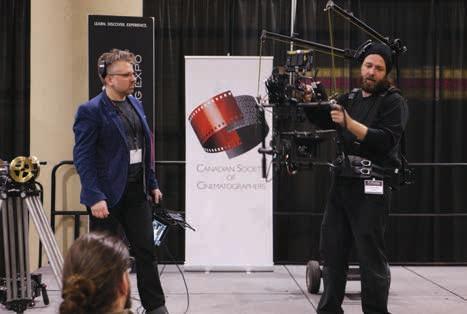
under $3,500 a pop, they’re not exactly bank breaking either. This, together with mostly positive performance reviews for the XEEN line, Rokinon may well have a winner on its hands. Tucked in between its wildly popular Celeb LED lights at the Kino Flo booth was a Select 30 LED prototype. It’s a new lightweight fixture that features a unique
colour-changing capability that can easily correct camera variances with a touch of green or magenta. “It has controllability from 2,700 to 6,500 kelvin, full dimming from 0 to 100 of course,” adds Tom Jacobs, Kino Flo sales representative for Canada. “And it has wireless control through LumenRadio connectivity, so you can actually run the Select in a fairly big room from up to 300 feet away.” Kino begins manufacturing the Select 30 this month, with the smaller Select 20 to follow. Need some lighting that’s in plain sight but out of sight? Then try ProFusion newcomer, Moss LED, a Toronto-based company that specializes in flexible LED strip lighting and tape. “The advantage of our lights is that they can be put anywhere and you can mask them as anything. So if you want to make a circle illuminate and you want to make anything change colour, you can do that with our LEDs,” according to the company. “Our largest production is Big Brother Canada, where we light up a 10,000-square-foot house, entirely with our LED product. There are no traditional lighting fixtures used on set at all.” Moss LED is distributed across Canada through William F. White and is now making inroads south of the border. This is simply a small sampling of what’s to see and do at ProFusion. So, if you’ve never attended and you work in Canada’s screen based industry, you should seriously think about putting it in your calendar for 2016.
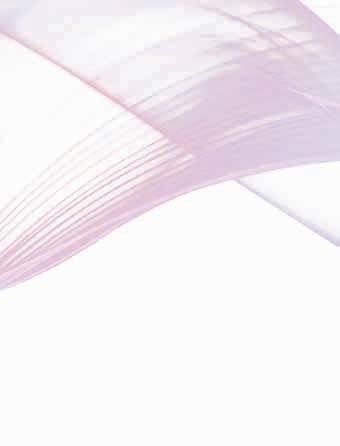
Sebastien Laffoux, Arri Canada, with Arri Alexa “Mini”
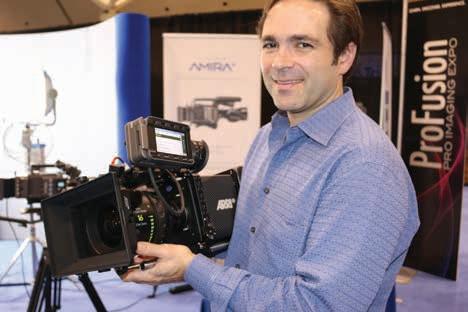
Tom Jacobs, Kino Flo, with the Select 30 LED Prototype
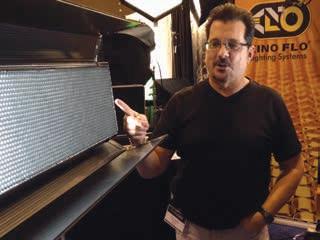
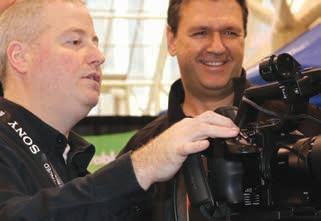
Francois Gauthier, Sony Canada, showing off the FS5
Photos credits this page: Bruce Marshall, except middle left, credit: Guido Kondruss
XEEN Lenses
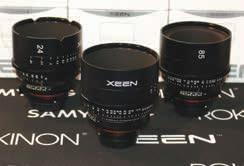
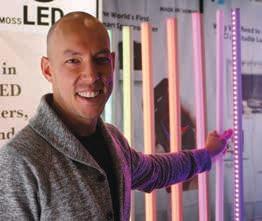
Jeffrey Moss, owner, MOSS LED
President from page 2 So, all in all, we can see that these workshops are well integrated. There exists an extremely attractive opportunity for those interested in advancing their skills to sign up for whatever workshop appeals to them. The CSC is working on the new schedule of workshops for this year and we are using the previous workshops as the guide and to update any pertinent information. We are also applying the very important feedback received from the previous participants, which allows us to be proactive in offering the best possible experience. New workshop listings are in the works and we look forward to another year where we welcome the next wave of aspiring, as well as experienced, filmmakers. And so, on behalf of the CSC, all that remains for me to do is to wish you a year filled with optimism. Good shooting.
Alwyn J. Kumst csc
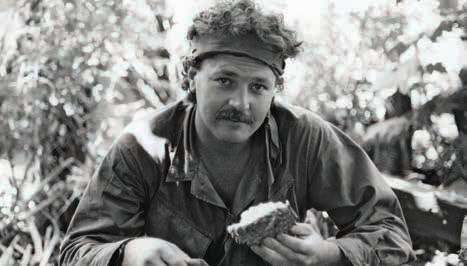
What films or other works of art have made the biggest impression on you?
We could fill this entire magazine with just a list of films and filmmakers who inspired me. Franco Zeffirelli’s Brother Sun, Sister Moon (1972), Polanski’s Tess (1979) and many others, but it was Ridley Scott’s Blade Runner (1982) that convinced me that I would like to be a cinematographer. The art of Thomas Moore was my reference for fine art. His use of central compositions in his paintings has had me break away from the classical rule of thirds very often in my work.
How did you get started in the business?
This is a long story. My stepfather was a large format stills photographer and in high school I worked in the studio and darkroom a lot. After school I was conscripted to the South African Navy and because of my photography experience I ended in the navy’s CCTV unit where I was given the task to replace all the old black and white Royal Navy training films from the 1950s with (at the time) current training materials. They gave me a Bolex camera, and a friend and I did everything from building our own animation stands to taking charge of submarines out in the ocean, shooting with a hand crank Bolex from a helicopter. It was awesome. After two years, my conscription ended and I started doing war documentaries in places like El Salvador, Nicaragua, Uganda, Namibia, and Angola.
Who have been your mentors or teachers?
Directors of photography Hugh Fowler and Digby Young, and directors Bill Faure and Annie Basson. Hugh was a particularly sensitive guy and very hard to work for. I somehow managed to work very well with and for him as a first AC and was required to sit in the edit rooms of every project we did. His lesson was storytelling. The equipment did not matter as much as the story. The right eye light at the right time could bring your audience to tears regardless of the lens or the camera.
Which cinematographers inspire you?
Another long list. The late John Alcott, Ghislain Cloquet, Geoffrey Unsworth, Bill Fraker and then of course Jordan Cronenweth (Blade Runner). A youngster in there would be Matthew Libatique.
Name some of your professional highlights.
I have no awards to show, but being called “the least bullshit DP that I have worked with” by John Landis was awesome. Also, seeing crew that have worked for me for many years take the upgrade and become something is also very special. We are so competitive and possessive of what we do yet the biggest rewards are when we share our work and our knowledge.
What is one of your most memorable moments on set?
Walking away from a helicopter crash [when] I was the focus puller on a feature film called Gemini. Surviving a head-on boat crash on a series called Sea Diver and being run over by a car driven by stunt driver Zaan Wienand. I call these memorable because they ended well. Everything we do is a calculated risk. It is never the intention to hurt or injure someone or break something. But we push the envelope in our make-believe world and then we put smiles on the audience’s faces. We inspire people to go out and do things or invent things.
What do you like best about what you do?
The fact that every day you may apply more or less the same techniques that you may have developed and somewhat perfected over time, but yet every day is different. Every situation is different and when you have a lot of life experience your inner palate is so much bigger. Life experience makes you a better artist.
What do you like least about what you do?
Politics. When you do series work like I do, you don’t always get the A-list directors because before long there is an actor or an editor, or even the producers friend’s cousin, directing and very seldom do they have the chops for the task. It makes it harder to maintain the look and style of a show.
What do you think has been the greatest invention (related to your craft)?
Electricity. Without it we could arguably still shoot with film (which I am not nostalgic about at all) and process it, but we need to display what we do, and without electricity we would not have theatres or TV, etc.
How can others follow your work?
alwynkumst.com. Or just turn on your TV, there is bound to be a re-run of something on some channel. Sometimes embarrassing because it may be work you have shot 25 years ago.




